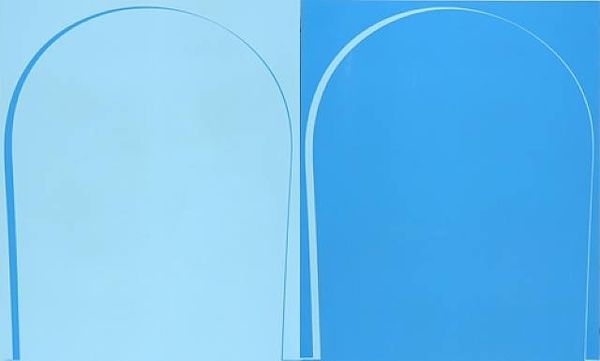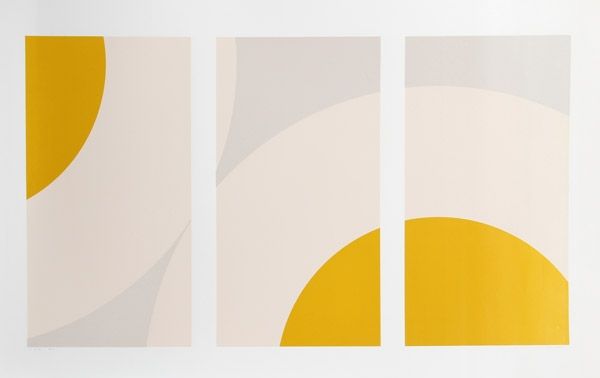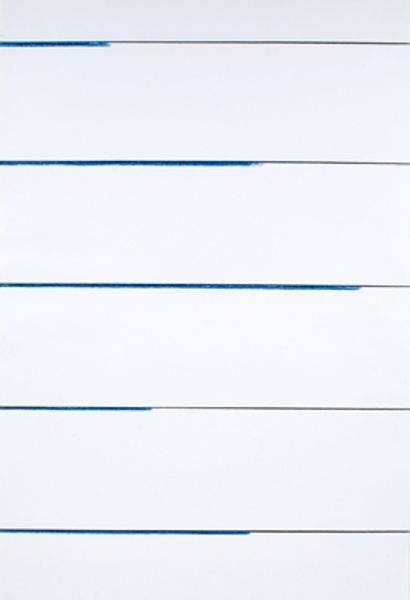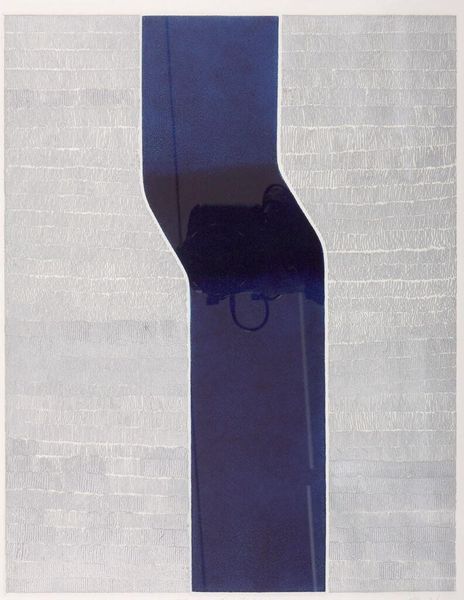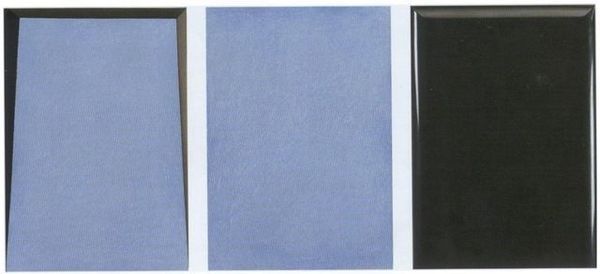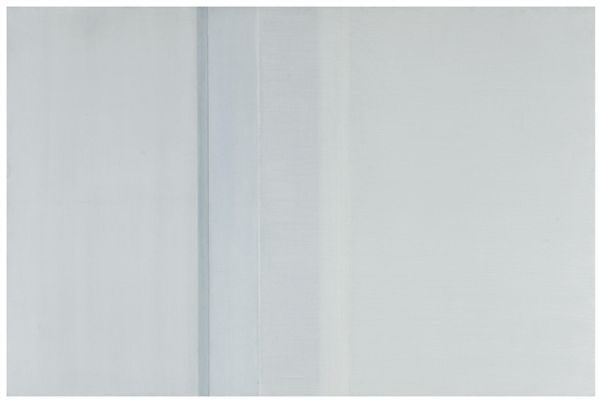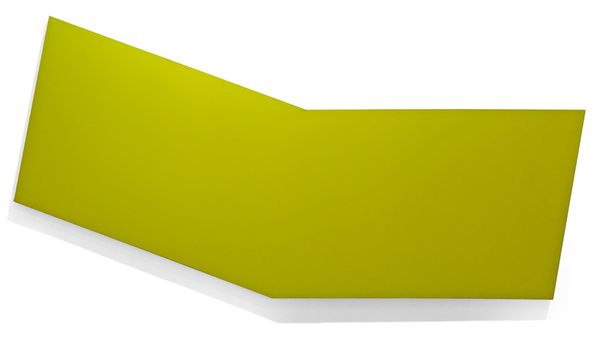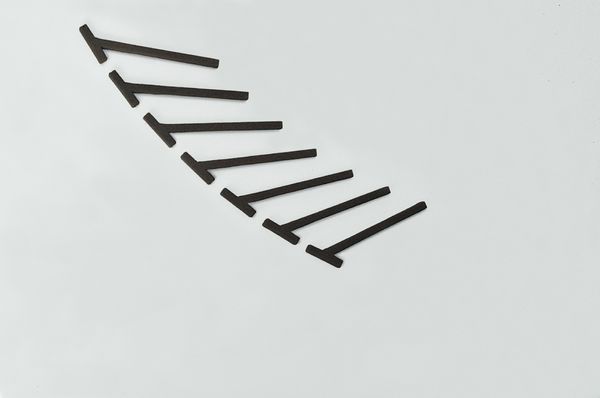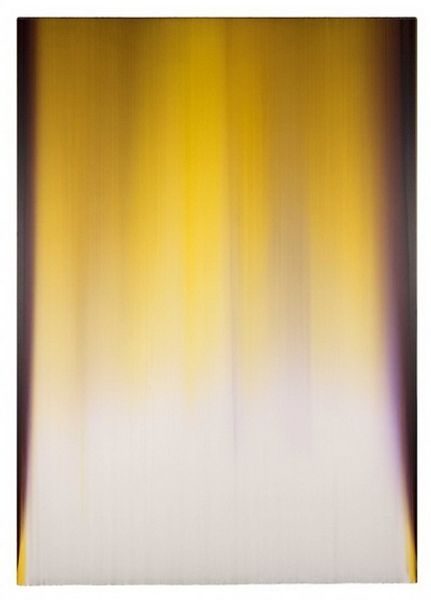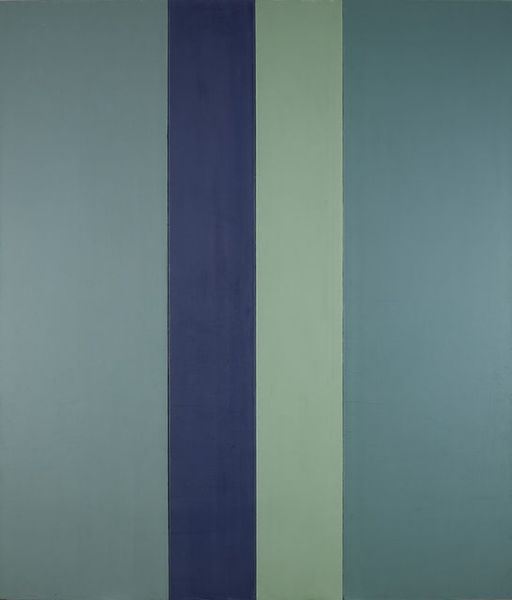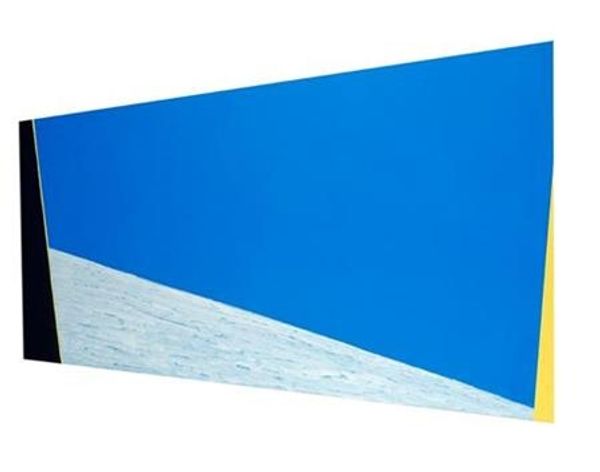
Dimensions: unconfirmed: 2438 x 5486 mm
Copyright: © Ian Davenport | CC-BY-NC-ND 4.0 DEED, Photo: Tate
Editor: So, here we have Ian Davenport's "Poured Painting: Blue, Black, Blue." It's quite large, and the repeated arch shape feels very architectural. What do you see in this piece? Curator: The arch, a motif resonant through centuries, speaks of doorways, portals, and transitions. Repeated, it evokes memory, perhaps a hall of echoes, where past experiences reverberate. Does it feel melancholic to you? Editor: I hadn't thought of melancholy, but I see that now. Curator: It’s the cool blue, isn't it? Color holds immense cultural power; blue often symbolizes the spiritual, the infinite. Editor: That’s fascinating; I’ll definitely consider the cultural weight of color going forward. Curator: Indeed, art continually layers meaning across time.
Comments
tate 7 months ago
⋮
http://www.tate.org.uk/art/artworks/davenport-poured-painting-blue-black-blue-t07837
Join the conversation
Join millions of artists and users on Artera today and experience the ultimate creative platform.
tate 7 months ago
⋮
Poured Painting: Blue, Black, Blue is a triptych consisting of nearly identical panels. The outline of a black arch on a predominantly blue ground is repeated on each panel. The painting is the product of a meticulous procedure of pouring and tipping that Davenport began employing in 1996, although his technique of pouring paint directly on to canvas or board dates from early in his career. Each panel of Poured Painting, made of medium density fibreboard, was sanded smooth. Davenport sprayed the board all over with household liquid gloss paint in the base colour, in this case a deep blue. Then, working on the floor, he poured black paint directly on to the panel. This process was carefully controlled: the artist stood on an improvised bridge across the painting, pouring paint directly from the paint pot onto the surface of the board. The paint spread across the panel in an ever-increasing circle. Just before it reached the edge of the board, the artist tipped the painting upright, allowing the excess paint to run off the bottom of the panel. This created an arch shape. After leaving this layer of paint to dry, Davenport then repeated the process with the base colour. Again, he stood over the panel, pouring blue paint on top of black until the previous layer was almost completely covered. At this point the panel was positioned upright again. This carefully controlled process was repeated three times to produce the panels of the triptych.
